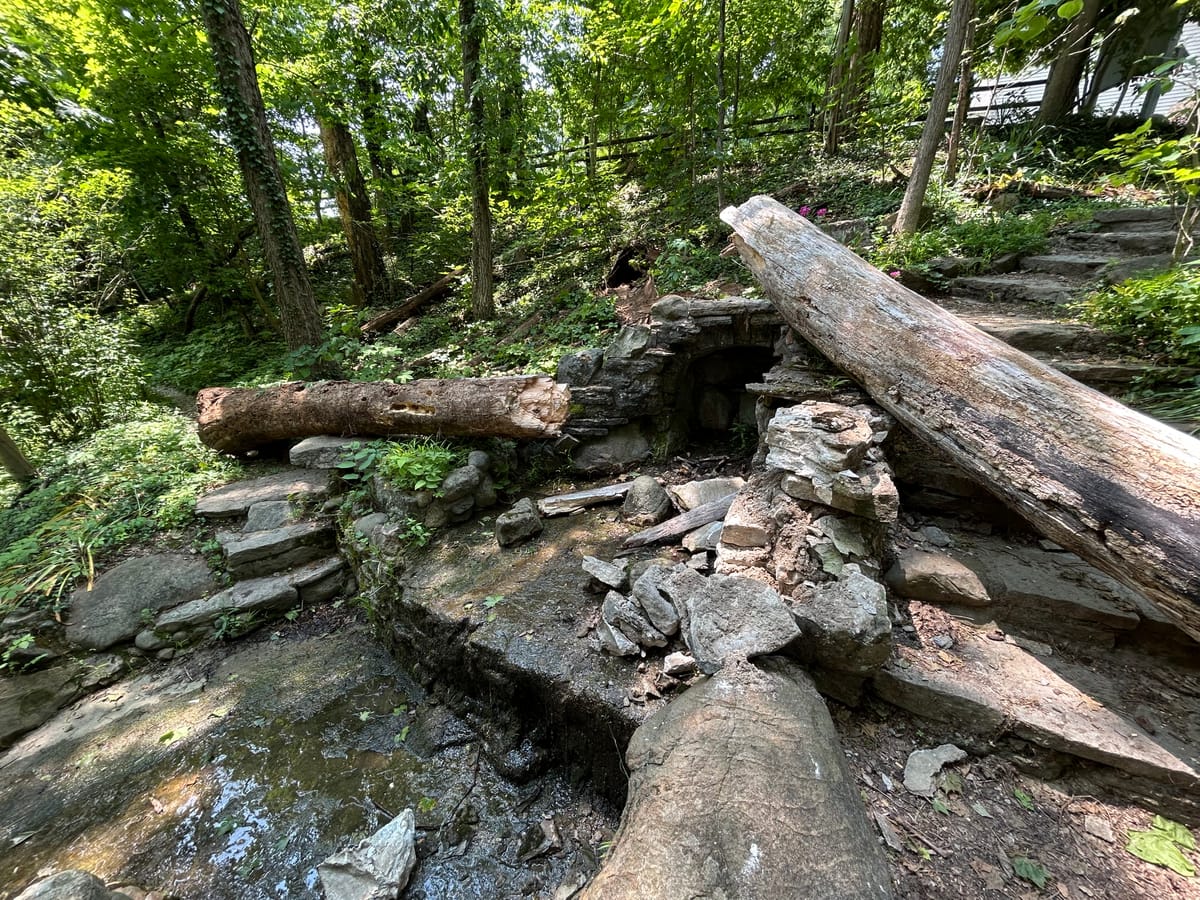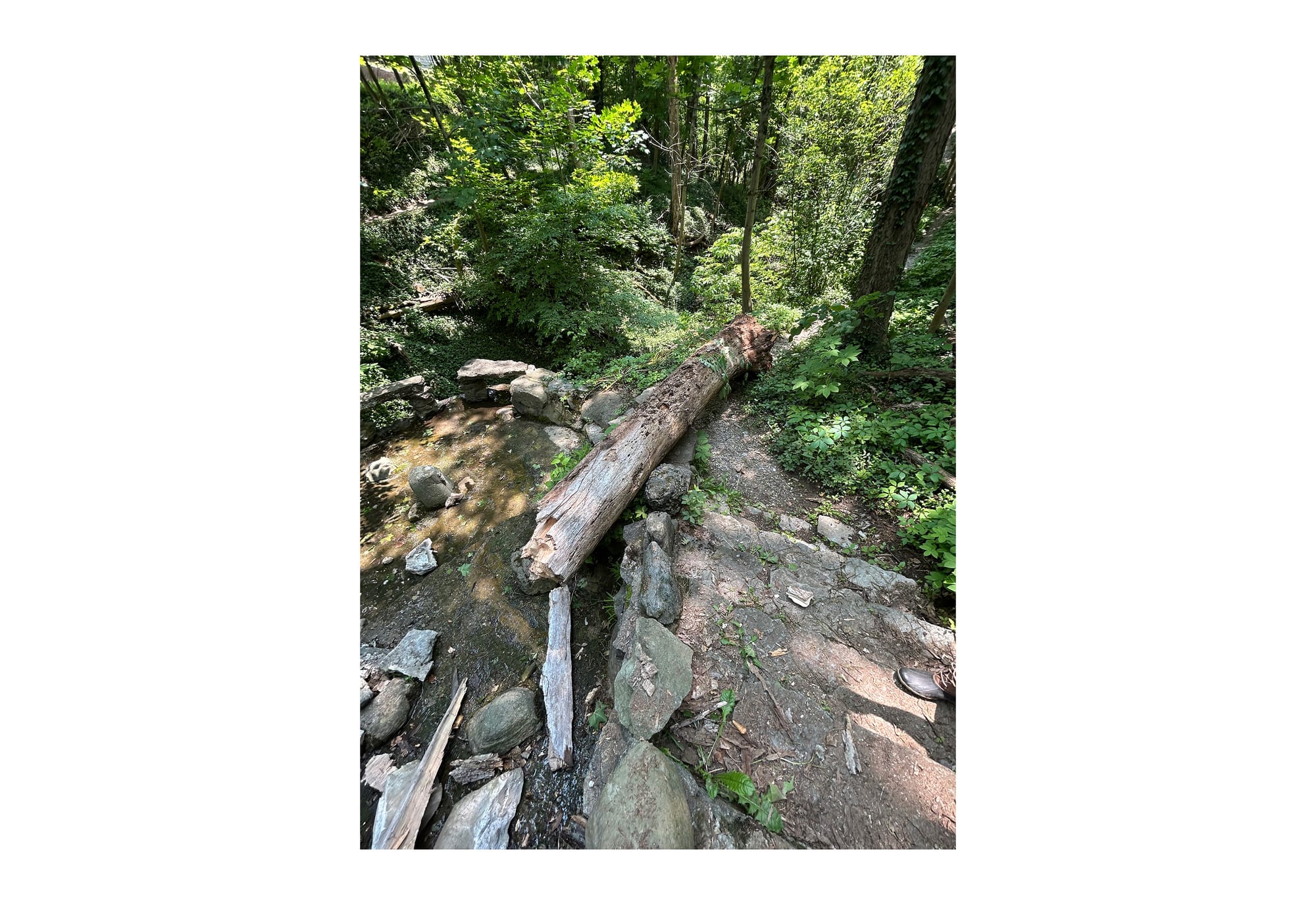Silvoor Stories: Snags and Stones
A recent treefall in the Silvoor Biological Sanctuary damaged a portion of the stone outflow constructed below the Silvoor trailhead.

Some of the smallest creatures can make the loudest noises. Birders will tell you the “teakettle, teakettle, teakettle” song of the Carolina wren — with a little round body like a golf ball — can pierce through a cacophony of cicada calls and choruses. The nightly chirps of Spring peepers, a frog species about the size of a US quarter, can wake one from a deep slumber. And somehow, a chipmunk moving through dry leaves on the forest floor can sound like a deer or a full-grown human being stomping around.
My dog Tillie and I were startled by such a chipmunk last week. We heard a sudden rustling in the leaves nearby, and I thought we would turn around to see another hiker on the trail. Instead, Tillie and I watched a small chipmunk jump from the ground up onto a fallen tree and skitter away as if the snag were a little interstate highway carving a straight and quiet path up the slope of the ravine. Once the chipmunk reached a safer distance, it paused and turned to watch us. I wondered where its cache of seeds might be stashed along that dead and decomposing tree.
Last week, a new section of this woodland interstate was added to the sanctuary as another snag fell and damaged a portion of the stone outflow that was constructed below the Silvoor trailhead in the early 1930s. It can be hard to predict which way a tree will fall. This snag was frequently visited by woodpeckers that drilled large holes in search of insects to eat. Our rainy spring likely loosened the soil around the base of the snag.

This is all a natural process in the woods, with each phase of the tree’s life and death providing crucial shelter and nourishment for forest residents. When snags fall in the woods, they provide pathways and cover for small mammals while slowly decomposing and adding nutrients to the soil. But when they fall across the trail, portions of the downed snags must be removed.
Our natural areas field manager swiftly arrived on the scene and cleared a path through the recent treefall. Now we face another challenge: large stones were knocked out of place and scattered about like small pebbles. We know from Dr. Robert Hefner’s writings that he himself collected these stones. Some are likely glacial erratics, while at least one is rumored to be a lava bomb ejected from a volcano in Italy. This unfortunate incident may give rise to a truly multidisciplinary effort: perhaps we can combine expertise in geology, engineering and masonry to put each stone back into place.

It will likely require some noisy work, but the clatter of machinery won’t last forever. The chain sawing and drilling will give way to the songs and choruses of our noisiest Silvoor residents, and portions of the snag will remain to provide nutrients, shelter and a place to rest for all who pass by.
Amanda Bentley Brymer is Assistant Director of the Institute for the Environment & Sustainability at Miami University, where she also serves as Curator for Silvoor Biological Sanctuary, part of Miami University’s Natural Areas.




